Plenary session
Spring 15 - Plenary session
Wednesday, May 13 (16:00 - 19:00)
Room VAUBAN (level 3)
16:00 - 16:15
Welcome address
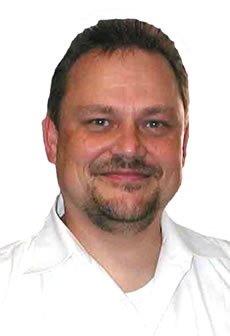 |
Thomas Lippert
|
|||||
16:15 - 16:55
Nitrogen-doped carbon nanomaterials: to the mechanism of growth, electrical conductivity and application in catalysis
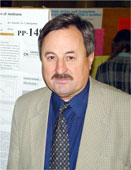 |
Z. R. Ismagilov (1)(2) and O. Yu. Podyacheva (2)
|
|||||
Synthesis of graphite-like carbon nanomaterials (CNMs) is a rapidly growing field of nanotechnology; by now, a large body of knowledge has been accumulated on the subject. In recent years, great efforts were made to find ways to precise control of electrophysical and adsorption properties of CNMs by modification of the carbon structure with heteroatoms, for example with the nitrogen atom (N-CNMs), for the deliberate synthesis of new functional materials.Doping of carbon nanomaterials with nitrogen produces changes in their electrophysical, adsorption and catalytic properties. The catalytic synthesis of nitrogen-doped carbon nanomaterials (N-CNMs) belongs to simple synthesis methods, is performed at moderate temperatures, leads to selective formation of N-CNMs, and is therefore more attractive than the physical synthesis methods.
A commonly accepted model describing the formation of undoped MWCNTs and CNFs on metal catalysts consists of three main steps: (1) decomposition of hydrocarbon molecules on the catalyst surface with the formation of adsorbed carbon atoms, (2) dissolution of the adsorbed carbon atoms followed by their diffusion within the catalyst particle or over its surface, and (3) formation of a nucleus and growth of a carbon tube or fiber outside the catalyst particle.
The mechanism of N-CNMs catalytic growth; the understanding of this mechanism is essential in the synthesis of active and stable catalysts for the production of N-CNMs. In situ XRD and ex situ XPS techniques were used to reveal the formation of surface nickel carbide, and oversaturated solid solution in the bulk of the particle. Correlations between composition of the reaction mixture, lattice parameter of solid solution and nitrogen content in N-CNFs were obtained.
The effect of nitrogen on conductivity of the nitrogen-doped carbon nanomaterials depends on: (1) type of conductivity is inherent in N-CNMs, (2) type of nitrogen species, and (3) total nitrogen content. The defectness of N-CNMs in comparison with CNMs estimated from the Raman spectra and optimal content of nitrogen for maximum conductivity is revealed.
The introduction of nitrogen atoms induces charges in N-CNMs, because electronegativities of nitrogen and carbon are different and equal to 3.04 and 2.55, respectively. Two main forms of nitrogen content in the quaternary state or pyridine-like nitrogen defines acid – base properties of surface.
The use of less expensive, environmentally benign and corrosion resistant CNMs is a promising way to replace the metal catalysts. The most interesting lines in the application of N-CNMs for catalysis: oxidation in the gas or liquid phase, dehydrogenation, and various reactions of organic synthesis.
In recent years, N-CNMs have been studied as the catalyst supports in various reactions. Owing to changes in physicochemical properties, the deposition of metal catalysts on N-CNMs should enhance their activity due to: (1) stabilization of metallic particles with a smaller size, narrowing of the particle size distribution, and increasing the metal-carbon binding energy, (2) acceleration of electron transfer in the catalytic system and activation of metallic particles because of the enhanced conductivity of N-CNMs, and (3) alteration of the acid-base properties of the support surface.
Changes in physicochemical properties of N-CNMs are accompanied by showing of their own catalytic activity. The beneficial role of nitrogen in provides new applications as the catalyst supports. The results of testing of N-CNMs in a number of catalytic reactions, in PEMFC and in supercapacitors will be presented.
Changes in physicochemical properties of N-CNMs are accompanied by showing of their own catalytic activity. The beneficial role of nitrogen in provides new applications as the catalyst supports. The results of testing of N-CNMs in a number of catalytic reactions, in PEMFC and in supercapacitors will be presented.
16:55 - 17:35
Chemical and process engineering for efficient inorganic-organic hybrid solar cells
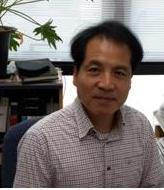 |
Sang Il Seok (1)(2)
|
|||||
One of the challenges of the scientific community working in green energy is to fabricate inexpensive and highly efficient solar cells to convert solar energy, the cleanest and most abundant renewable energy source available on Earth, into usable electrical energy. Recently, antimony chalcogenides (Sb-Chs) and inorganic-organic hybrid perovskites as light harvesters have been considered as promising candidates for next generation solar cells due to the combination of superior optical properties with the opportunities for inexpensive, solution-based device fabrication. In this presentation, I will talk about the possibility of Sb-Thiourea (Sb-TU) complex solution, and chemical combination of methylammonium lead iodide (MAPbI3), methylammonium lead bromide (MAPbBr3) and formamidinium lead iodide (FAPbI3) materials for the application to efficient solar cells. Furthermore, solvent-engineering technology for the extremely uniform and dense perovskites layers will be introduced. Our results showed that chemical and process engineering leads to a remarkable improvement of the inorganic-organic hybrid solar cells..
17:35 - 18:15
EU-40 Materials Prize Winner
Why hybrid halide perovskites keep me awake at night
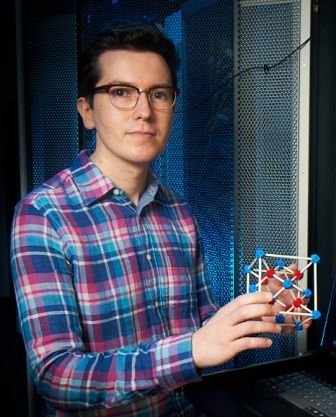 |
Aron Walsh
|
|||||
Perovskites are the wonder compounds of materials science, with examples of ferromagnets, ferroelectrics, superconductors, semiconductors, ion conductors, and recently highly-efficient photovoltaics. This talk will address the chemical and physical properties that make the new class of hybrid perovskites unique.
Over the past three years, my group has been addressing the origin of the success of methylammonium lead iodide solar cells from multi-scale materials modelling. These organic-inorganic materials satisfy the optoelectronic criteria required for an active photovoltaic layer, i.e. spectral response in the visible range combined with light electron and hole effective masses. In addition, these systems are structurally and compositionally flexible with large dielectric constants, and the ability to alloy on each of the lattice sites.
I will discuss issues ranging from local structural disorder arising from molecular vibrations and rotations within the inorganic network, to ferroelectricity arising from the molecular dipole orientations. The simulated temporal behaviour of hybrid perovskites has recently been validated through a combination of neutron scattering, time-resolved vibrational spectroscopy, and kinetic measurements of hysteresis in the current-voltage response.
18:15 - 18:30
Award Ceremony
 |
Reach.Out! |
|||||
This science communication competition aims to engage the members of the European Material Science community in public outreach activities. E-MRS, as a partner of the EU project STIMULATE "Stimulating the public attitude towards advanced materials", seeks to recognize members of the European Materials Science community (students, scientists, engineers, researchers etc) who have designed, organised and implemented a public outreach activity in the EU between May 2014 and the 31st of March 2015.
This outreach activity must be related to Advanced Materials and its main aim must have been to uncover, to the non-specialists, one or more of the following aspects of work within this field: its applications, its impact on the creation of sustainable societies, its impact on the economy, the people behind the scenes, the complexity of the work done, and of course. possible controversies etc. Entrants must be individuals of 18 years old or more, members of the European Materials Science community, i.e. currently studying or having studied a relevant subject at University (from undergraduate to doctoral level) or working on the science, technology or engineering of Advanced Materials. Their project may be a result of personal or a team work.
18:30 - 19:00
Symposium Organizers Address
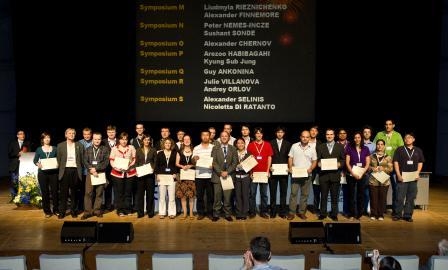 |
followed by |
|||||
E-MRS Graduate Student Awards are intended to honor and encourage graduate students whose academic achievements and current materials research display a high level of excellence and distinction. E-MRS seeks to recognize students who show promise for significant future achievement in materials research.
All participants are invited to join the conference reception on Wednesday May 13, 2015 after the plenary session. Enjoy drinks and food while listening to live music! It is a chance to meet and renew relationships with colleagues. The participation is free of charge.
